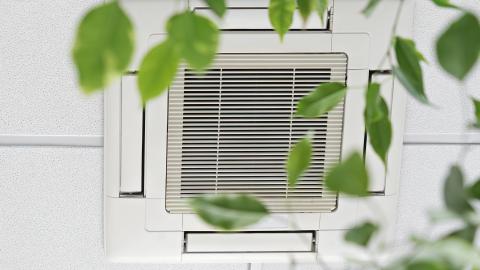Bed bugs

Bed bugs are small, brownish insects that feed on the blood of people, other mammals and birds. Young bed bugs are very tiny and hard to see.
Identifying bed bugs
Bed bugs are small brownish, flattened parasites (4 - 5 mm long) that feed on the blood of humans, birds, and other mammals.
- Bed bugs are flightless but can crawl quickly over floors, walls and ceilings.
- They can also hitch rides or move around on clothing, furniture, purses and luggage.
- Females lay up to 5 eggs daily (200 - 500 in a lifetime). The eggs are tiny, whitish and barely visible (size is approximately 1 mm) and tend to be found in cracks/crevices in dark areas.
- Bed bugs are very resilient. Nymphs can survive months without feeding and the adults for more than a year
Signs of an infestation
- Bed bugs generally hide in cracks and crevices during the day and come out to feed at night.
- Bed bugs do not have nests like ants or bees but tend to hide in clusters.
- Bed bugs prefer to hide near where they feed and return to the same hiding spot. They will crawl more than 100 feet to obtain a blood meal.
- Most infestations start around beds and spread throughout a room and beyond.
- Bed bugs usually bite people at night while they are sleeping.
- The bites can occur on any exposed skin and the symptoms vary with the individual.
- Some people develop an itchy welt or localized swelling, while others have little or no reaction.
- Blood stains (black/red), and spots of fecal material on upholstered furniture, sheets, pillows, mattress and box springs are also signs of infestation.
- Live or dead bed bugs and their cast skins. Live bed bugs confirm an active infestation.
- An unpleasant sweet, musty odour may occur with a severe infestation.
- During the early part of an infestation bed bugs are more likely to be found on boxsprings, upholstered furniture, mattresses and headboards. If allowed to multiply, they establish themselves behind baseboards, window and door casings, pictures. moldings, and in furniture, loosened wallpaper, and cracks in plaster and partitions.
Control of bed bugs
Bed bugs are difficult to deal with and require the combined efforts of the tenant, property owner and qualified pest control technician.
A combination of preparation prior to treatment, chemical treatment, pest proofing and monitoring is recommended to effectively control bed bugs.
Contact a professional pest control company if you suspect a bed bug problem.
Follow the preparation instructions that your landlord or pest control company provides you. They may include:
- Laundering clothes and linens on hot settings. Transport in sealed bags to prevent spread of insects. Store clean items in sealed bags until chemical treatment is completed.
- Vacuum thoroughly, especially along the carpet edges. Dispose of the vacuum bag in a sealed plastic bag. Remove from home immediately.
- Remove all belongings from furniture, tables, wardrobes, and closets to allow the pest control technician to treat items. Store belongings as directed.
- Move furniture away from the edges. Dismantle bed and other furniture.
- Some items, such as fabric furniture, may have to be discarded if there is a heavy infestation.
- Remove pictures and electrical outlet covers from walls.
- Eliminate clutter. The more clutter, the harder it is to eliminate bed bugs.
Treatment:
- A certified pest control technician must service multiple dwellings.
- Be prepared for more than one treatment
Pest proofing work done by the owner includes:
- Wash and caulk cracks and crevices in walls, ceilings and floors.
- Paint walls and ceilings where the paint is peeling or chipped.
- Remove peeling wallpaper.
A building owner/manager should regularly inspect suites for bed bugs and ensure there is not too much clutter.
- The greater the bed bug problem, the greater the number of inspections needed.
VACUUM, VACUUM, VACUUM
- It is easier to control a bed bug problem when numbers are low.
Treating bites
Suggestions for the treatment of bites include:
- Resist the urge to scratch;
- Wash the bite areas with antiseptic soap to reduce the risk of infection;
- Apply an ice pack frequently to help relieve swelling;
- Ointments or lotions can be applied to ease itching;
- See your doctor if the bite develops into an infection. Skin irritation, swelling or infection may be due to medical conditions or insect bites other than bed bugs.
In rare cases, people can have a serious allergic reaction to bed bug bites.
Bed bugs are not associated with the transmission of human disease.
Bed bug preventions
Bed bugs can be brought home on second-hand items (clothing, electronics, furniture, etc.)
- Wash and dry second-hand clothes in a hot setting. Put them into a clean bag.
- Heating items to 60°C will kill eggs, nymphs and adults.
- Inspect items thoroughly for signs of bedbugs. If in doubt, keep it out.
Bed bugs can be brought home on your clothing or belongings. If you go into an infested situation:
- Store your purse and backpack in a pest-proof container, such as a sealed plastic bag. Alternatively, store items where bed bugs are less likely to be (a tabletop rather than a bed).
- Avoid sitting on upholstered furniture or beds.
- When you get home, put clothes in a hot drier for 1 cycle to kill hitchhiking bed bugs.
Visitors can bring in bed bugs
- Ask visitors from an infested home to check their clothing for hitchhiking bed bugs and to store belongings in a sealed plastic bag or container.
Don’t spread bed bugs if you have them.
- Discard infested items in sealed bags (moving companies often have mattress bags).
- Do not drag infested mattresses (furniture, etc.) through hallways.
- Mark discarded furniture “bed bug-infested” or make it unusable.
- Don’t give away or sell infested items.
Protect your belongings from getting infested
- Use bed bug-proof mattresses and box spring covers. (Bed bugs cannot chew through anything, so store valuables in sealed containers.)
- When travelling, inspect your sleeping quarters.
Pesticide safety
Care must always be taken to prevent accidental pesticide exposure, even though all registered products are considered safe to use if handled properly. If you use pesticides, always read and follow the instructions on the label.
- If your home is going to be treated with pesticides, it is recommended that you:
- Vacate premises during treatment;
- Arrange to be out for 4 to 8 hours after the application (24 hours if you are pregnant, have respiratory ailments, allergies or are sensitive to chemicals);
- Air out the suite well when you return;
- Always follow the advice of the pest control applicator.
Re-entry time will vary depending on the pesticide, treatment method and individual susceptibility.
Vancouver Coastal Health encourages the application of Integrated Pest Management (I.P.M.) principles for safe and effective pest control.
Resources
-
-
Bedbugs
Health Canada
-
How do I prevent an infestation?
Health Canada
-
How do I get rid of them?
Health Canada
-
How do I make sure they don't come back?
Health Canada
-
How do I avoid them when travelling?
Health Canada
-
Where do I go for more information?
Health Canada
-
Bed bugs info
-
-
-
Guide to bed bug control (English)
-
Guide to bed bug control (中文)
Chinese
-
Guide to bed bug control (Tiếng Việt)
Vietnamese
-
How to handle bed bugs in your home
-
How to handle bed bugs in a hotel
-











